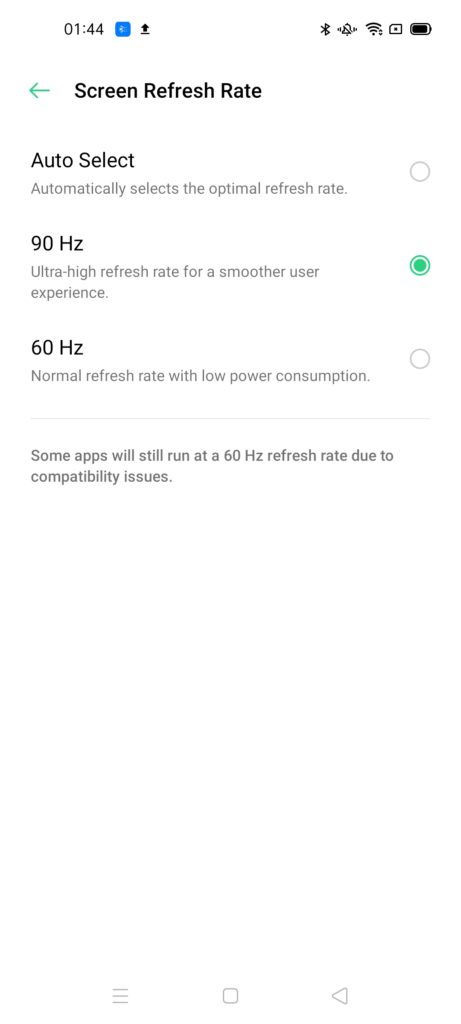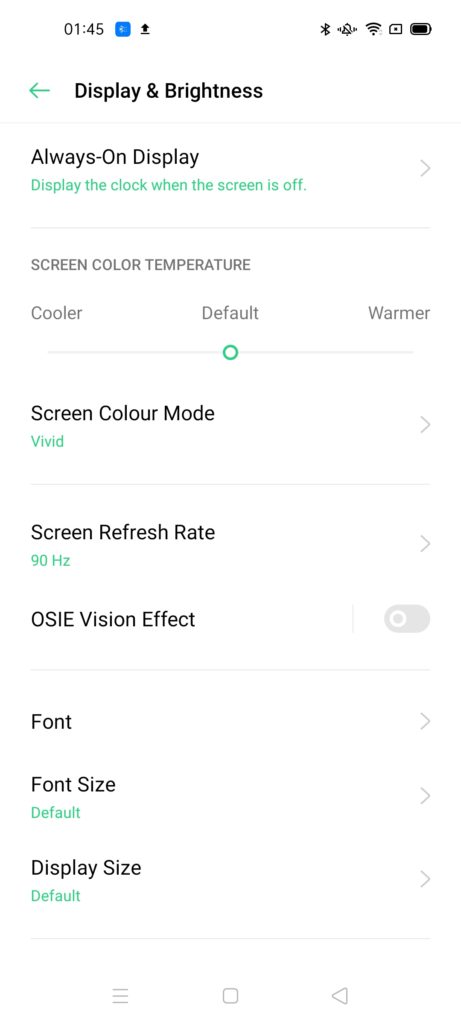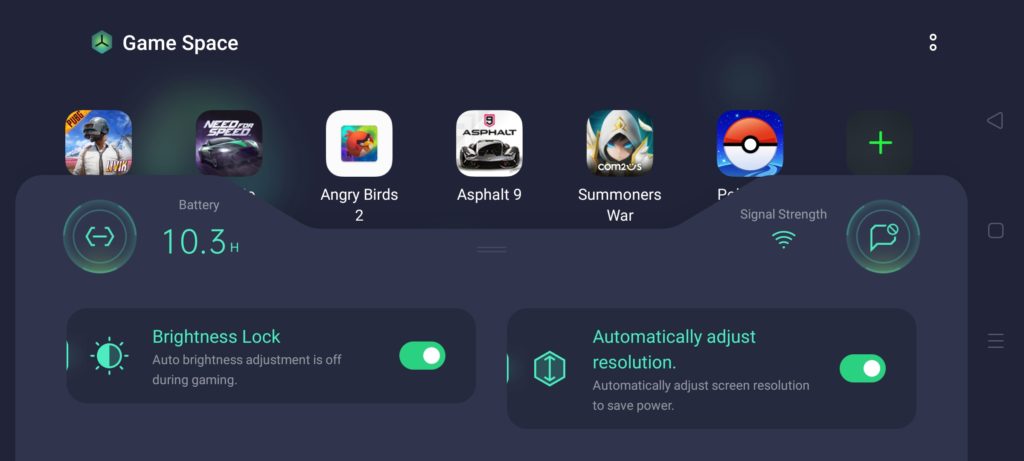OPPO has always been in the forefront when it comes to innovation and design. Earlier this year, we’d seen how the OPPO Find X2 Pro (Review) made its mark in the local market through its perfect blend of style and performance.
Fast-forward five months, OPPO is now back with a brand new premium mid-ranger offering – OPPO Reno4 Pro – which will be succeeding the Reno3 Pro launched in March.

This time round, the new OPPO Reno4 Pro shapes up to be a really exciting smartphone offering users the industry-leading 65W SuperVOOC 2.0 fast-charging, as well as a smooth and immersive graphics which bring entertainment to a whole new level.
Most importantly, it arrives just in time to provide consumers an alternative over the Samsung Galaxy Note20 4G and Vivo X50 Pro which will also go on sale in the local market this month.
So, how does the OPPO Reno4 Pro actually stood up against other recently announced big guns? We’ll soon find out in this review!
Design
As usual, design continues to form the fundamental basis of the OPPO Reno4 Pro – just like any of its predecessors. While the earlier models were characterize by the signature shark fin-style pop-up selfie camera, this feature had since been ditched by the more recent Reno series smartphones.

For the Reno4 Pro, OPPO has opted for a dual-curved, hole-punch design for its front panel which kind of remind me of the Find X2 Pro. The curve along the edges are subtle and doesn’t cause me any issue of accidental touches or visual distortions which occasionally tag along with a curved display.
To provide better ergonomic, the Reno4 Pro also has a gorgeous dual-curved back panel which curves gradually towards the metal frame sandwiched between the front and back panels. Coupled with its 7.7mm slim profile and a 161 grams featherlight weight, the Reno4 Pro is really nice and easy to hold in various posture.

Despite having a plastic back, the anti-glare smooth matte panel actually gives the Reno4 Pro a distinctive and luxurious outlook. On top of that, its rectangular camera island has a mirror-like finish that matches well with the Starry Night colorway. Its dazzling design really makes you think twice when using a protective cover.
Although this boils down to personal preference, but what I felt really makes its rear design stood out is the iPhone 11-like protruding lenses of its quad-cameras system which we don’t usually see among smartphones.
Display
Coming to the specifics, the OPPO Reno4 Pro features a 6.5-inches FHD+ Super AMOLED display with HDR 10 support which delivers rich and vibrant colors for an immersive user experience.
To make things even sweeter, its front display also offers an impressive 90Hz refresh rate – a much needed feature which most mid-ranger smartphones sadly miss out on.

Adjustable refresh rate 
Adjustable color temperature
The high refresh rate actually helps to eliminate the “jelly” effect you occasionally experience when scrolling through web pages and provides a smoother user experience on the whole. Other than that, it also allows you to play games or run entertainment contents on a higher frame rate.
Moving on, its front panel also has sufficient peak brightness to keep the screen visible even under bright environment, or directly under the sun. To protect the screen against accidental drops and minor scratches, the front panel will also be shielded by a layer of Corning Gorilla Glass 5.
Performance & Gaming
At the helm, the OPPO Reno4 Pro is powered by Qualcomm’s Snapdragon 720G platform manufactured under an 8nm process. Needless to say, this is a major upgrade over the MediaTek Helio P95 SoC used in the Reno3 Pro.
The Snapdragon 720G is based on an octa-core architecture consisting of a pair of Cortex-A76 cores (clocked at 2.3GHz), as well as six Cortex-A55 cores (clocked at 1.8GHz). On the graphical-end, it will be assisted by an Adreno 618 GPU for fast graphic renderings.
Certainly, we couldn’t compare the Snapdragon 720G SoC with other flagship chips from Snapdragon’s 8-series. However, I honestly felt the 7-series chips are more than sufficient for a day-to-day use or even indulge in competitive gaming under default settings.
It will only be an issue if you play under the maximum game setting with high frame rates. Other than that, you can really expect a smooth entertainment experience with no stuttering or hitches. Another plus point is that the device also barely heats up despite using it continuously for hours.

Just like the OPPO Find X2 Pro, the ColorOS 7.2 on the Reno4 Pro also brings along the custom “Game Space 2.0” settings which I found really useful and intuitive. For those who do not know, the “Game Space 2.0” open users to a wide range of tools and custom settings which certainly come in handy whether you are gaming casually or competitively.
Most of the time, you will find the “Block Notifications” setting extremely useful as it allows you to toggle off notifications and automatically reject calls during intensive gaming runs.
Other than that, there is also the “Competitive mode” setting which will turn the device into a gaming beast by buffing up game performance, frame rate and responsiveness.
Finally, it will be rounded up with an ample 8GB RAM which can easily handle multiple background apps and browsing tabs without experiencing any memory bottleneck.
Cameras
Next up, let’s talk about its cameras. The OPPO Reno4 Pro has a total of 5 cameras, including four cameras at the back and a single selfie camera at the front.
The rear cameras consist of a 48 Megapixels (f/1.7 aperture) main camera, 8 Megapixels (f/2.2 aperture) ultra-wide camera, 2 Megapixels (f/2.4 aperture) macro camera, as well as a 2 Megapixels (f/2.4 aperture) depth sensor.
As usual, its main camera will utilize a 4-in-1 pixel-binning technology to output 12 megapixels shots by default. Although it also allows user to shoot 48 megapixels high-res images, but I honestly don’t see any difference between the two, so you can safely stick to the pixel-binned image.


Overall, its main camera did a immaculate job in delivering clear images with accurate colors and good dynamic range. The level of details in the images are also well-preserved under a normal to bright environment, and does not have any sign of overexposure.


For low-light environment, you can confidently rely on the “Night Mode” which helps brighten up the scene via its advanced image processing algorithm which will take you around 4-seconds. Personally, I felt that the night shots taken by the Reno4 Pro are pretty impressive, except it do occasionally show signs of over exposure on brighter areas of the scene.

To push its limit, I went on to test out its camera in my almost completely dark room, with only some pale light shimmering from my laptop placed a distance away. This time round, the phone automatically switches over to the “Ultra Night Mode” which actually did well in illuminating the figurine and its background.

Moving on to its ultra-wide shots, the Reno4 Pro continues to excel in this category. Images shot with the ultra-wide lens generally maintains its rich dynamic range and somehow give you a surreal impression. However, if you really zoom deep into the image and focus on a specific area like the river bank, you may find that the level of details do deteriorate slightly.
Due to the omission of a dedicated telephoto lens this time round, we wouldn’t be expecting to see those insane zooming capabilities like we saw on the earlier OPPO Reno 10x Zoom. Instead, the OPPO Reno4 Pro will offer a standard 10x digital zoom.
To make up for the shortcoming of the lack of telephoto lens, the Reno4 Pro is blessed with a wizardry image processing software to ensure that the zoomed images remain highly usable.



As seen in the samples, image taken with 2x zoom remain flattering and indistinguishable from the default mode. At 5x zoom, the image remain detailed and doesn’t appear grainy although the color appears slightly flatter. In fact even at the maximum zoom level, the quality of the image is still acceptable as we can still easily sieve out features within the scene.


Finally, we have the close-up portrait shots which I really enjoy snapping with the Reno4 Pro. You can really see that the device is splendid in this aspect too.
The images taken in portrait mode has a soft and natural bokeh effect at the background which allows the subject in the foreground to really stood out. On top of that, it also has accurate edge detection and pays meticulous attention to minute details of the subject – as seen from the facial details of the cat in Portrait Sample #1.
For selfies, the OPPO Reno4 Pro rely on a single 32 megapixels camera at the front. Its a highly versatile camera which has dedicated night mode and portrait mode for you to click instaworthy selfies. The default mode is capable of delivering selfies with good exposure and realistic colors – so you don’t have to worry about any exaggerated beautification.
Battery & Charging
At the helm, the OPPO Reno4 Pro is backed by a respectable 4,000mAh battery which scores big in terms of endurance. On a normal usage, the device could easily end off the day with around 30% battery remaining which is pretty surprising given its average battery capacity.
However, that’s only the icing on the cake. What really blows my mind off is none other than its 65W SuperVOOC 2.0 fast-charging support which is capable of delivering a full charge within 37 minutes on average.
Its really a much-needed feature for people like me who usually went to bed without charging my phone and get freaked out early in the morning when I saw the battery level fall to a single digit.
With the Reno4 Pro, that wouldn’t be an issue at all. You can confidently charge the phone after you wake, and prepared to be greeted with at least 80% battery capacity by the time you head out for work.
Conclusion
So, how does the OPPO Reno4 Pro stands against other recently announced smartphones including the Vivo X50 Pro and Samsung Galaxy Note20 5G? My opinion will still be the same as what I’d wrote on the recent article which I compared between the three devices based on raw specs and pricing.
That is, if you’re an average user who do not require the functionalities of a S-Pen or those advanced stabilization offered by a gimbal-style camera system, then the OPPO Reno4 Pro is definitely a perfect smartphone for you. Not only does the device comes with a lower-price tag, it also offers a set of well-balanced specs baked beneath a sleek and premium looking exterior.
As I mentioned earlier, the Snapdragon 720G in the Reno4 Pro is certainly powerful enough to handle day-to-day usage and any mobile game titles in the Play Store. Coupled with its high refresh rate and a blazing-fast charging rate, the Reno4 Pro brings users modern technologies that most other smartphones in the same segment aren’t able to offer.
Pricing & Availability
For those who’re interested, the OPPO Reno4 Pro is available through the local telcos, as well as other online and offline channels.
Pricing for the device start from as low as S$0 under a two-years mobile contract with M1, Singtel or StarHub. Otherwise, it will be available at an off-contract price of S$899 via Lazada or Shopee.